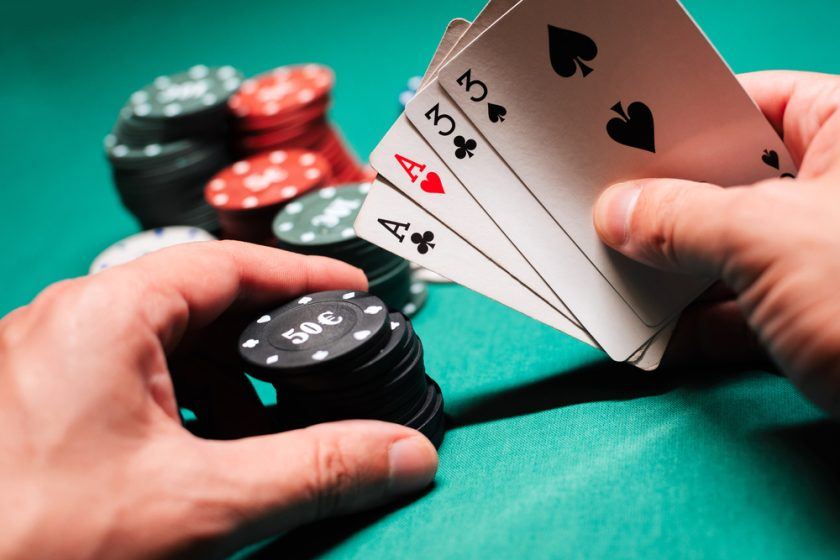10 Advanced Poker Tactics Every Intermediate and Experienced Player Should Know

Image credit: VITALII BORKOVSKYI / Shutterstock
Already mastered beginner poker strategy and looking to sharpen your skills? If you want to consistently dominate the tables and outplay even savvy opponents, you’ll need a new set of tools and deeper strategic insight. Here, we break down 10 essential advanced poker tips that can elevate your game to the next level.
Select the Right Table for Maximum Results
Choosing where you play is just as important as how you play. Even the ninth-best player in the world risks constant defeat if they only compete against those stronger than themselves. Seek out tables filled with less seasoned participants-commonly called “soft” games. Watch for cues: players distracted by phones or deep in conversation might be less threatening than focused, silent adversaries.
Success at poker isn’t about proving your skills to the toughest crowd-it’s about maximizing your winnings. Don’t let pride guide your decisions. As poker pro Jonathan Little once put it, your main priorities should be to find beatable games and to play them frequently. Make this a habit if you’re serious about building your bankroll.

Image credit: VITALII BORKOVSKYI / Shutterstock
Assess and Adapt to Your Table Image
Your reputation at the table-how other players perceive you-can significantly affect the action you’ll face. Whether you’re playing live or have transitioned from online poker, being aware of your image is key. For example, a young aggressive player is often called by opponents, while an older, conservative player is usually given more credit for strong hands.
If fellow players believe you only bet with premium holdings, opportunity arises for well-timed bluffs. Conversely, if they think you’re loose, you’ll want to dial back the bluffs and bet for value more frequently. Instead of focusing solely on the board, always consider who made the bet and why-they might be driven by pride, boredom, or even a desire to impress.

Image credit: VITALII BORKOVSKYI / Shutterstock
Balance GTO and Exploitative Play Wisely
A solid grasp of Game Theory Optimal (GTO) versus exploitative play is crucial as you progress up the stakes. GTO encourages making balanced, difficult-to-read decisions. In contrast, exploitative play focuses on countering observed weaknesses in your opponents-even if it makes your actions more predictable.
At lower stakes, heavily exploiting obvious mistakes (such as only betting big hands) is lucrative. However, as you face tougher competition, unpredictable and balanced play becomes essential. A practical way to begin is by continuation-betting (c-betting) on the flop after raising preflop, regardless of your actual hand. This masks your exact holdings and forces your opponents into tough spots.

Image credit: VITALII BORKOVSKYI / Shutterstock
Make Your Bets Clear: Polarize, Don’t Merge
Understanding your betting reason is fundamental: are you value betting or bluffing? Mixing the two (“merged” bets) leads to costly errors. For big bets or all-ins, only polarize-bet with your strongest hands and your weakest, unplayable bluffs. Avoid placing massive bets with mediocre hands that can neither credibly bluff nor expect calls from worse.
When you polarize, opponents must guess if you have a monster or nothing at all, making your play tougher to counter.

Image credit: VITALII BORKOVSKYI / Shutterstock
Trapping: Know When to Slow Play (And When Not To)
While slow playing ("trapping") can be profitable, especially against aggressive bluffers, many opponents at lower stakes rarely bluff enough to make this worthwhile. If you’re always checking strong hands hoping others lead into you, you might just be missing value.
Most of the time, your best route to bigger pots is by simply betting your big hands. Reserve slow playing for those rare moments when you’re up against known bluffers who are eager to fire off multiple barrels.

Image credit: VITALII BORKOVSKYI / Shutterstock
Choose Your Bluffing Spots Carefully-Avoid Multiway Pots
The effectiveness of a bluff plummets when multiple players are in a hand. The probability that at least one opponent has connected with the board rises rapidly with each additional player. Against a single foe, you might succeed in pushing them off a weak holding; but with three or more opponents, calling your bluff becomes much more likely.
Save your bluffing maneuvers for heads-up situations, where psychological warfare is most effective and risk is minimized.

Image credit: VITALII BORKOVSKYI / Shutterstock
Mastering Pot Odds for Informed Decisions
Calculating pot odds allows you to understand if a call is worth the risk compared to the potential reward. For example, if a pot contains $10 and someone bets $5, calling means you would potentially win $15 for your $5 call-a 3:1 payout. Compare these odds to the chance of hitting your draw: if the draw hits only 20% of the time (odds of 5:1), calling with only 3:1 pot odds is not profitable in the long run.
Practice these calculations so they become second nature, enabling you to make better, faster decisions under pressure.

Image credit: Kitreel / Shutterstock
Protect Your Bankroll With Smart Money Management
Financial discipline separates professional grinders from casual players. If poker is your main (or only) income, you need a large enough bankroll to withstand inevitable downswings and bad runs. Industry guidelines advise having:
- At least 25 buy-ins for cash games
- At least 100 buy-ins for tournament play
For example, a $500 buy-in cash player should keep a $12,500 reserve, while a tournament player entering $100 events should ideally have $10,000 for consistent play. Big fields and high-variance games may demand even larger bankrolls. Skillful bankroll management is your insurance policy against busting out due to variance rather than poor decisions.

Image credit: Kitreel / Shutterstock
Emotional Resilience: Beat Tilt to Play Your Best
Maintaining a calm, focused mindset is essential. “Tilt,” or playing recklessly due to frustration or overconfidence, is a common downfall even for elite players. Emotional swings-whether from a devastating loss or an unexpected win-can lead to wild bets, chasing losses, and overall poor play.
Monitoring your emotional state, taking breaks when needed, and avoiding play when tired, upset, or distracted are essential habits for long-term success. True discipline is not only about folding losing hands, but also about knowing when to step away to protect yourself (and your bankroll) from further damage.

Image credit: Kitreel / Shutterstock
Continual Improvement: Study Off the Tables
The strongest poker players dedicate substantial time to learning and analysis outside of active play. Elevate your results by investing in your knowledge and well-being. Focus on:
- Math Skills: Learn to quickly calculate outs, pot odds, and probabilities. Dive into advanced topics like ICM for tournaments.
- Board Analysis: Develop an instinct for betting patterns, board textures, and hand ranges using reputable training tools and hand review sessions.
- Bankroll Planning: Set clear guidelines for risk management and adapt your stakes when necessary to sustain longevity.
Also, look after your body and mind-regular exercise, healthy social interactions, and maintaining balance are just as crucial as tactical preparation. Consistent improvement both on and off the felt positions you for long-term success at every level.
Apply these strategic insights in your next session to gain the edge over your opponents and continue your growth as a formidable poker player.













